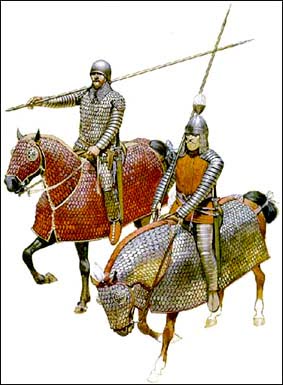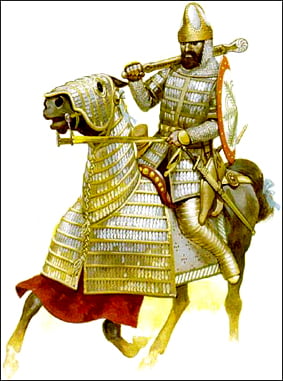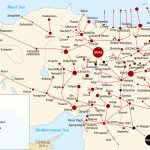Armenian heavy Cavalry (Azatavrear), Armenian horseman, horse archer

From the ancient times in Armenia exited “Azatavrear” cavalry which consisted from elite of Armenian tribes, later from elite of Armenian people. “Azatavrear” cavalry was the main part of Armenian kings court. Later, in medieval “Azatavrear” cavalry or Armenian heavy cavalry was collected from nobles (youngest sons of Armenian lords) and was known as AYRUDZI (man and horse, horseman). During peace time Armenian cavalry was divided into number of small groups which took the role of guarding King and his family as well as Armenian lords. Some part of Armenian cavalry was patrolling Armenian borders under the command of Armenian general (sparapet). The Group of Armenian cavalry whose main mission was the protection of Armenian king and his family in ancient period consisted from 6000 heavy armored horsemen, and in medieval period – from 3000 horsemen. In war time the number of Armenian cavalry reached from 10,000 up to 20,000 horsemen or even higher. Beside Armenian Heavy cavalry there was Armenian light cavalry, which mainly consisted from horsemen archers.
V. Chapot wrote: “What they say about Armenia bewilders us. How could this mountain people develop such a cavalry that was able to measure itself against the horsemen of the Medes? One thing which is certain is the fact that Armenia …was a source of excellent well bred horses. The people in this country had discovered that horses were not just an economic asset, but could also be used for military purposes.”1
When in 428 Armenia lost its independence Armenian heavy cavalry wasn’t disbanded. It was used by Armenia’s neighbor kingdoms and empires, like Byzantine Empire and Sassanid Persia.

In Sassanid Persia, the Armenian cavalry was accorded a status similar to the elite “Savaran” of the Persian army. The equipment of the Armenian cavalry was in fact similar to that of the Savaran. Pro-Sassanian Armenian cavalry units fought under Sassanid banners and were allowed to enter the royal capital, Ctesiphon. The Armenians were in fact honored for their services. For example, general Smbat Bagratuni was accorded particular honor and attention by Khosrov II. In 619, due to his victory over the Turks who then resided in Central Asia, he was given gifts, such as lavishly decorated robes, and the command of a number of the king’s royal guards. Khosrov II also raised him to third in rank among the nobles of the court. Moreover, pro-Sassanian Armenians supplied excellent light cavalry and infantry, who were notable for using slings to repel enemy cavalry, and spears for close combat.2
SOURCES
- V. Chapot, La frontière de l’Euphrate de Pompée à la Conquète arabe, 1907, Paris
- armenian-history.com



